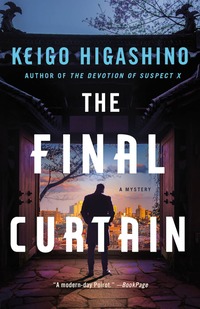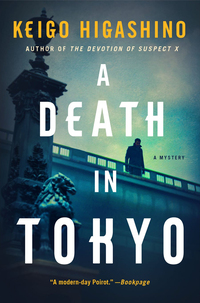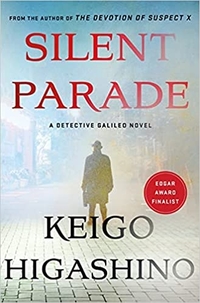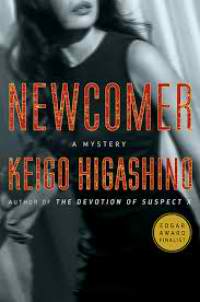Invisible Helix by Keigo Higashino
 Monday, December 9, 2024 at 7:45AM
Monday, December 9, 2024 at 7:45AM 
First published in Japan in 2021; published in translation by Minotaur Books on December 17, 2024
As American crime fiction once did, Japanese crime novels focus on mysteries that must be solved. Modern American crime novelists tend to focus on the elements of a thriller — fistfights, shootouts, chases — with less attention paid to unraveling a mystery. When American writers try to incorporate detection into their thrillers, they too often make a botch of it by favoring sensational reveals over credible puzzles.
Keigo Higashino has become one of crime fiction’s best mystery writers. His books move quickly but they aren’t action novels. Higashino writes traditional mysteries, planting clues that the reader will see in a different light after investigators piece them together.
Invisible Helix begins with a desperate mother who leaves her baby and a handmade doll at the gate of an orphanage. The baby’s father died during Hidemi Negishi’s pregnancy. Without the father’s income, Hidemi felt she had no choice but to give up the child.
In the present, Sonoka Shimauchi works in a flower shop. Her mother, Chizuko Shimauchi, was raised in the orphanage that later employed her. Chizuko raised Sonoka as a single mother. Chizuko met her best friend, children’s book author Nae Matsunaga, while working at the orphanage.
After Chizuko dies, Ryota Uetsuji comes to the flower shop to order floral arrangements for videos he’s shooting. Ryota begins to woo Sonoka and soon they are living together. When Ryota notices that Sonoka always sleeps next to a handmade doll, Sonoka explains that it belonged to her mother. If the doll seems like a Dickensian plot device, never expect the obvious from Higashino.
Things seem to be going well for Sonoka until Ryota begins to abuse her. When Ryota’s body is recovered from Tokyo Bay with a bullet hole in its back, Sonoka becomes the chief suspect. Sonoka promptly disappears with the help of a friend who knows that the police are coming for her. Sonoka’s disappearance hours before the police want to question her contributes to suspicion that she is a murderer.
The investigation of Ryota’s death falls to Chief Inspector Kusanagi, the co-protagonist of this series. He is assisted by his old friend, Professor Manabu Yukawa, whose ability to piece clues together until they form a solution earned him the nickname “Professor Galileo.”
One of Ryota’s most recent outgoing cellphone calls was to Hidemi Negishi, mama-san of a hostess bar known as VOWM. Kusanagi is assigned to interview Hidemi because he is “an aficionado of hostess clubs.” He brings Yukawa, who quickly discerns the true origin of the club’s name. A working knowledge of both Chinese and Japanese is required to figure it out. Fortunately for those of us who lack that knowledge, Yukawa explains how the odd name is relevant to the story.
As is customary in these books, Yukawa solves the mystery of Sonoka’s disappearance and of her husband’s murder in his own way, even if he has to go behind Kusanagi’s back to assure that his own version of justice is done. Yukawa even solves a mystery that changes his life, one that is tangentially related to the murder investigation. Maybe that’s a bit much, but the plot is otherwise nice and tidy, as a reader might expect of Japanese crime fiction.
Events unfold in ways that are different from those the reader will likely imagine. Higashino skillfully inspires erroneous conclusions about the identities of and relationships between key characters. The reader won’t learn the truth until the plot has twisted multiple times. Paragraph by paragraph, Higashino constructs the clever plot that his fans have come to expect.
Hostess clubs are an aspect of Japanese life that tend to fascinate Americans. The “Darwinian world of nightlife” in Japan isn’t explored in much depth, but it adds atmosphere to the story. The ending is in some respects a little sad, a bit touching, but the story is never marred by melodrama.
RECOMMENDED
 TChris |
TChris |  Post a Comment |
Post a Comment |  Japan,
Japan,  Keigo Higashino in
Keigo Higashino in  Thriller
Thriller 


